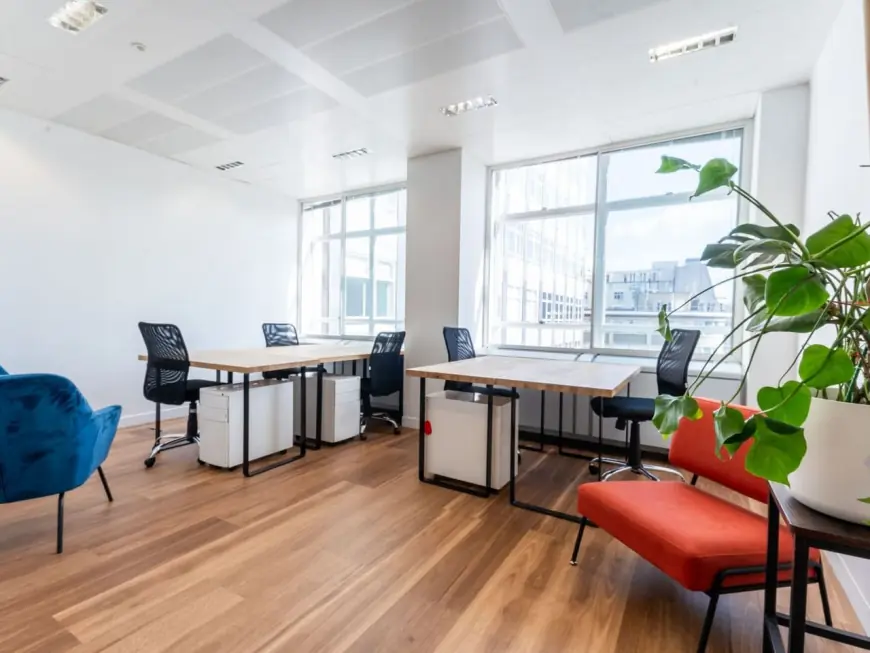Is Your Therapy Room Designed for Maximum Comfort, Trust, and Healing?
Learn how to design therapy rooms that foster comfort, trust, and healing. Optimize your space to enhance client success, well-being, and therapeutic outcomes.

When it comes to therapy, whether it’s physical, psychological, or emotional, the environment plays a crucial role in the healing process. The design of a therapy room isn’t just about aesthetics; it’s about creating a space that fosters comfort, trust, and a sense of safety for your clients. If you’re a therapist or healthcare provider, you might wonder: Is your therapy room designed for maximum healing?
In this article, we’ll explore the essential elements that contribute to healing therapy rooms, how it affects the therapy process, and why it’s essential to consider these factors when choosing where to rent office space. Let’s dive into how you can optimize your therapy room to enhance the healing experience for your clients and boost your practice’s success.
The Power of Space in Therapy
The environment where therapy takes place plays a pivotal role in how clients feel and interact with their therapist. Research has shown that a comfortable and well-designed therapy room can reduce anxiety, create trust, and encourage open communication. On the other hand, a room that is poorly designed, cluttered, or uninviting can make clients feel uncomfortable, distracted, or even hesitant to engage fully.
When designing a therapy room, therapists need to prioritize creating a calm, welcoming atmosphere that promotes relaxation, mindfulness, and openness. This means focusing on not just the furniture but the colors, lighting, and even the arrangement of the room itself.
Key Elements for Designing a Healing Therapy Room
Creating a therapeutic space that encourages healing involves paying attention to several key aspects. Let’s break down these elements that contribute to a well-designed therapy room:
-
Comfortable and Functional Furniture
Furniture is one of the most important elements of a therapy room. For clients to feel safe and comfortable, the room needs to have seating that allows them to relax, such as comfortable chairs or sofas. When deciding what furniture to include, think about the type of therapy you provide. For example, if you provide talk therapy, comfortable chairs or sofas are essential for creating a space where clients can feel at ease.
For physical therapy or other healing modalities, you may need a treatment table or specialized equipment that promotes comfort during exercises or treatment. The furniture should be functional and adaptable to different therapeutic needs while also being aesthetically pleasing.
-
Lighting that Sets the Mood
Lighting is another vital element when designing therapy rooms. Harsh, fluorescent lighting can make a room feel sterile and uninviting. Instead, opt for warm, soft lighting that promotes relaxation. Natural light is often considered the best choice, but if that’s not an option, you can incorporate adjustable lighting that allows you to create a variety of moods in the room.
Additionally, soft lamps or overhead lighting with dimming options are excellent choices for therapy rooms. Consider investing in floor lamps or table lamps that provide indirect lighting, which is gentle on the eyes and creates a calm ambiance.
-
Color Scheme and Decor
The color scheme in your therapy room can have a profound effect on the mood of both you and your clients. Calming, neutral tones such as light blues, soft greens, and earthy neutrals are ideal because they promote a sense of tranquility and focus. Bright colors such as reds or yellows, while energizing in some contexts, may be distracting or even overwhelming in a therapy setting.
Incorporating elements of nature through indoor plants, soothing artwork, or natural materials (such as wood or stone) can further enhance the feeling of calm and connection. However, it’s important to avoid clutter, which can create a chaotic feeling. Keep the decor minimal and calming to foster relaxation.
-
Privacy and Sound Control
Privacy is a cornerstone of a successful therapeutic experience. Clients need to feel assured that their conversations will remain confidential. This makes soundproofing a critical aspect of your therapy room’s design. Consider using heavy curtains or drapes, carpets, and acoustic panels to reduce noise from the outside world and prevent distractions.
If you rent office space in a building with multiple tenants, soundproofing becomes even more important. A room designed with privacy in mind allows clients to open up without fear of being overheard or interrupted.
-
Temperature Control and Air Quality
Comfortable room temperature is often overlooked, but it’s an essential factor in a healing environment. Too hot or too cold can be distracting, preventing clients from fully relaxing. Make sure the room has proper ventilation, and the temperature is easily adjustable. In addition, fresh air and good air quality are important for a clean and healthy environment.
Consider adding air purifiers or plants that naturally improve air quality to make your therapy room as comfortable as possible for both you and your clients.
-
Minimal Distractions
It’s easy to overlook the impact that small distractions can have on a therapy session. Any technology that isn't essential to the therapy process, such as ringing phones, should be eliminated or kept out of sight. For example, if you’re renting office space, ensure that the room is equipped with furniture and equipment that encourage a sense of focus.
A clean and organized space free from distractions makes it easier for clients to feel present and focused during their sessions. Avoid clutter and unnecessary items that might draw attention away from the healing process.
-
Accessibility and Comfort for All Clients
A truly inclusive therapy room is one that is accessible to all clients, regardless of their physical abilities. Make sure that the room is easy to navigate, with clear pathways and adjustable furniture for those who may have mobility challenges. For physical therapy practices, it’s essential to have the proper equipment that’s designed to assist clients with different abilities.
Designing a room that’s comfortable and accessible ensures that every client, regardless of their needs, can engage fully in the therapeutic process.
How to Choose the Right Space to Rent for Therapy Rooms?
When setting up your therapy practice, the location and design of your therapy rooms are essential for your success. One of the first decisions you'll make is renting office space. It’s important to select a space that allows you to create an environment that meets your specific needs and those of your clients. Here are some key considerations when renting office space for your therapy room:
-
Location
The location of your office space is crucial for attracting clients. Ideally, your therapy room should be located in a quiet, peaceful area, free from distractions and noise. This can help maintain the serenity that’s needed for effective therapy sessions.
If you work with specific populations (such as children, the elderly, or individuals with disabilities), you might want to rent space near schools, medical centers, or community hubs where your target audience is most likely to be.
-
Size and Layout
When renting office space, the size of the room is another important factor to consider. A therapy room should have enough space to accommodate the furniture and any specialized equipment you may need. The layout should also support the flow of the sessions, with clear pathways for movement and accessibility for all clients.
Before committing to rent for office space, check if the layout allows flexibility, so you can adapt the room as your therapy practice evolves.
-
Privacy and Safety
Ensure that the office space you rent offers sufficient privacy and safety for both you and your clients. Soundproofing and secure entryways are critical to maintaining confidentiality. You should also check that the building adheres to relevant safety regulations and accessibility standards.
-
Parking and Accessibility
Convenient parking options and easy access are important for your clients. Ideally, the therapy room should be located in a building that offers parking spaces or public transportation options nearby. It’s also crucial to ensure that the building is accessible to clients with disabilities.
-
Ambiance of the Surrounding Area
Even if your therapy room itself is perfectly designed, the ambiance of the surrounding area can impact the overall experience. Choose a location in a peaceful, calming neighborhood to ensure your clients can escape the noise and hustle of the outside world.
Conclusion
The design of your therapy room can significantly influence the success of your practice and the overall healing experience for your clients. By carefully considering elements such as furniture, lighting, color scheme, privacy, and comfort, you can create an environment that fosters trust, relaxation, and effective therapy.
When you decide to rent for office space, it’s important to choose a location that allows you to design a therapy room that meets your specific needs and aligns with the values of your practice. Whether you’re working with individuals, couples, or families, your therapy room should be a place of calm, healing, and transformation.
Ultimately, a thoughtfully designed therapy room is more than just a physical space – it’s an essential tool that helps facilitate healing and well-being for every client who walks through the door. Take the time to design a space that truly supports your clients, and watch your practice thrive.
Want to enhance your therapy room for maximum healing? Rent for office space that supports your practice's growth and client success with carefully designed therapy rooms.
What's Your Reaction?
 Like
0
Like
0
 Dislike
0
Dislike
0
 Love
0
Love
0
 Funny
0
Funny
0
 Angry
0
Angry
0
 Sad
0
Sad
0
 Wow
0
Wow
0




















































